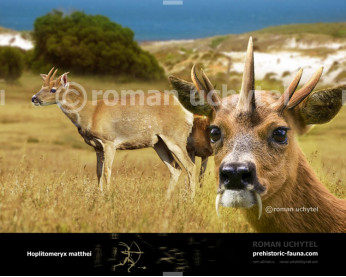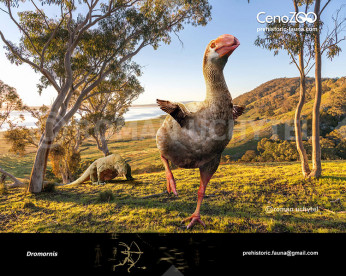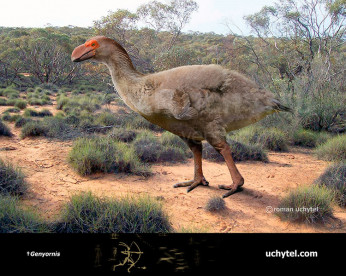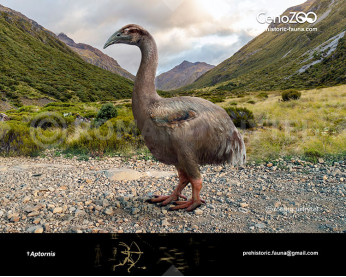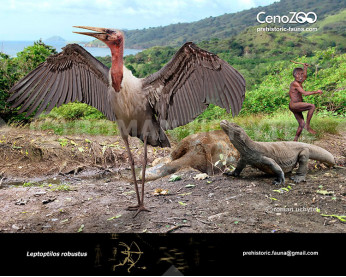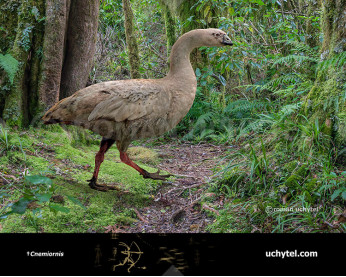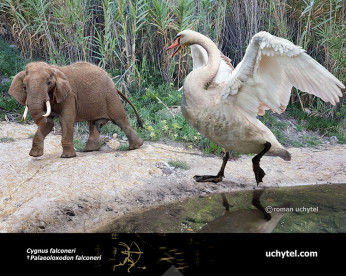Gargano giant goose
24472447
Gargano giant goose (†Garganornis (Meijer, 2014))
Class: Aves
Order: Anseriformes
Family: Anatidae
Time period: from the Miocene epoch (Gargano, Italy, 9–5.5 Ma )
Size: more than 1,4 m in height, 15 - 22 kg of weight
Gargano giant goose had a weight in the range of 15–22 kilograms, larger than any living geese and swans. Is probably the largest waterfowl to have ever existed .This suggests that it was likely flightless.
In some specimens of Garganornis, there is a small bony knob on the top of the carpometacarpus that is similar to that of swans, geese, ducks, and other anseriforms; this was likely used for fighting, as in other members of the group. Its leg anatomy also indicates a more terrestrial lifestyle, probably adapted to traversing the steep forested areas of the island, and it's very likely its feet webbing was also reduced.
Garganornis peculiarly shares a number of characteristics in the tibiotarsus with another group of large anseriforms, the Gastornithidae. However, given that gastornithids and other Paleogene fauna do not appear to have survived in - or even reached - this region, it is more likely that these shared traits are convergent adaptations to gigantic body sizes.
Оплата
У Вас є кілька зручних способів купівлі зображення: кредитна чи дебетова картка Visa, Mastercard, Maestro; PayPal або банківський переказ
Gargano giant goose (†Garganornis (Meijer, 2014))
Class: Aves
Order: Anseriformes
Family: Anatidae
Time period: from the Miocene epoch (Gargano, Italy, 9–5.5 Ma )
Size: more than 1,4 m in height, 15 - 22 kg of weight
Gargano giant goose had a weight in the range of 15–22 kilograms, larger than any living geese and swans. Is probably the largest waterfowl to have ever existed .This suggests that it was likely flightless.
In some specimens of Garganornis, there is a small bony knob on the top of the carpometacarpus that is similar to that of swans, geese, ducks, and other anseriforms; this was likely used for fighting, as in other members of the group. Its leg anatomy also indicates a more terrestrial lifestyle, probably adapted to traversing the steep forested areas of the island, and it's very likely its feet webbing was also reduced.
Garganornis peculiarly shares a number of characteristics in the tibiotarsus with another group of large anseriforms, the Gastornithidae. However, given that gastornithids and other Paleogene fauna do not appear to have survived in - or even reached - this region, it is more likely that these shared traits are convergent adaptations to gigantic body sizes.

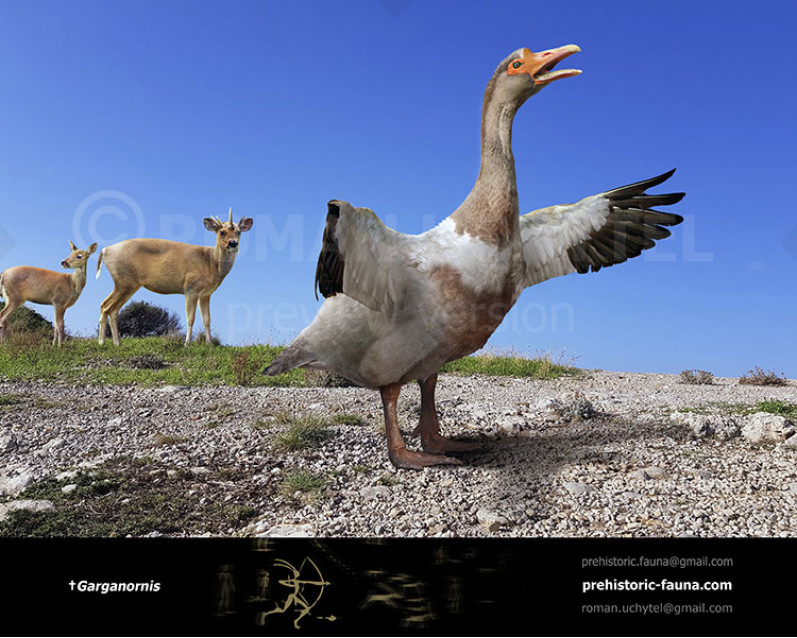
-797x638.jpg)

-70x56.jpg)
